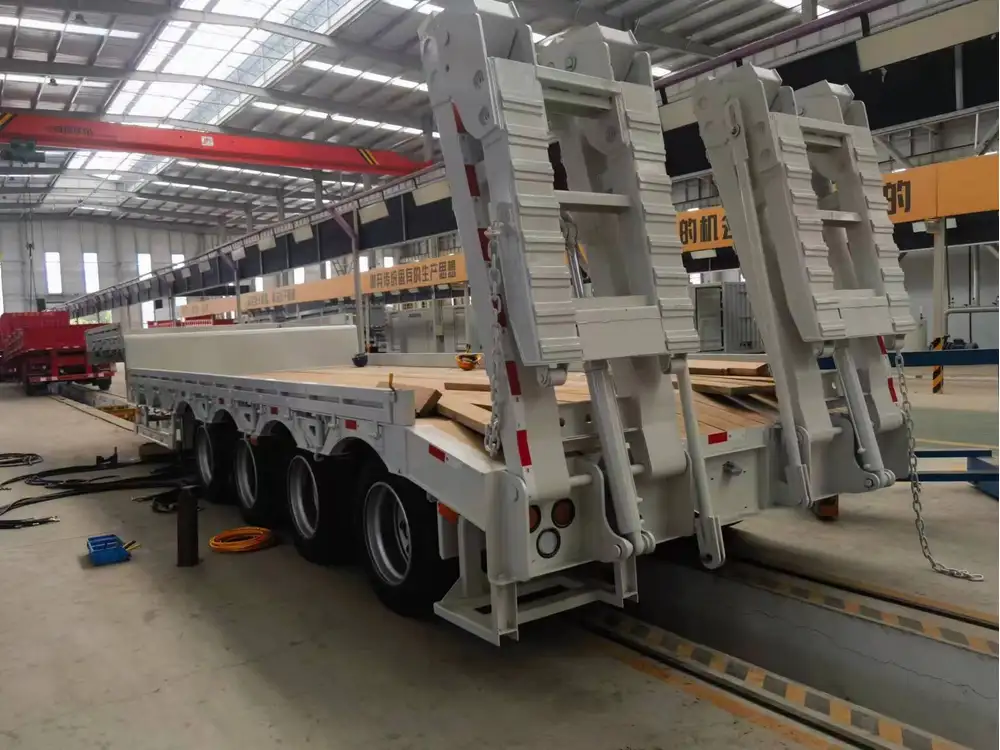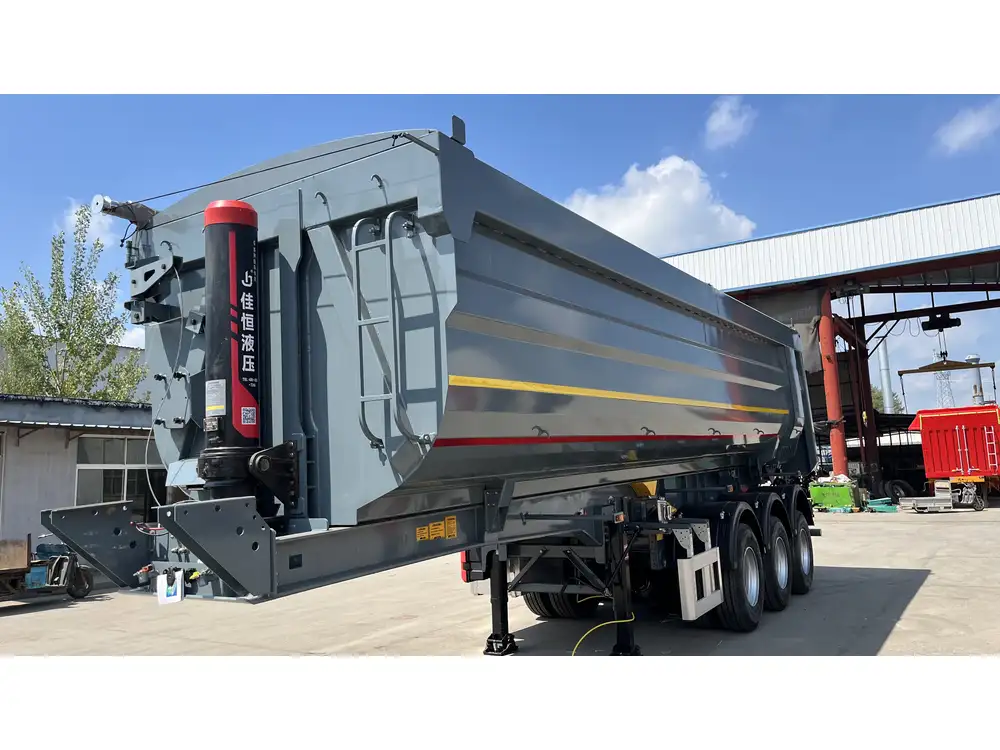Maintaining the integrity of a semi-trailer’s braking system is paramount for ensuring safety on the road. The complexities involved in braking systems require diligent attention and periodic checks. This guide provides an exhaustive overview of how to effectively check brakes on semi-trailers, ensuring optimal safety and performance in your operations.
Understanding the Components of Semi-Trailer Brakes
Before diving into the inspection process, it’s crucial to familiarize ourselves with the primary components of semi-trailer brakes:
| Component | Function |
|---|---|
| Brake Pads | Create friction against the brake disc to stop the trailer. |
| Brake Discs | Rotating discs that the brake pads clamp onto for deceleration. |
| Air Chambers | Convert compressed air into mechanical force to actuate the braking process. |
| Slack Adjusters | Automatically adjust the brake to compensate for wear. |
| Brake Drums | Encapsulate the brake shoes and provide a surface for braking. |
| ABS Control Module | Prevents wheel lock-up and maintains vehicle stability. |
The Importance of Regular Brake Inspection
Frequent checks help to identify worn parts, air leaks, and other potential hazards that could compromise safety. Inspections should occur:
- Before long trips
- After maintenance service
- Periodically, based on usage frequency

Step-by-Step Guide to Checking Semi-Trailer Brakes
1. Safety Precautions
Before beginning the inspection, always prioritize safety:
- Ensure the semi-trailer is on a flat surface.
- Engage the parking brake.
- Use wheel chocks to prevent movement.
- Wear appropriate safety gear including gloves and goggles.
2. Visual Inspection of Brake Components
Start by conducting a thorough visual inspection of all visible brake components. Look for:
- Cracks or Damage: Examine brake pads, drums, and discs for visible cracks or warping.
- Corrosion: Inspect metal parts for rust, especially air chambers and lines.
- Fluid Leaks: Check for hydraulic or air leaks around brake lines and the air compressor.

3. Measure Brake Pad Thickness
Utilize the following methods to measure brake pad thickness:
| Method | Tools Needed | Details |
|---|---|---|
| Caliper Measurement | Brake caliper gauge | Insert the gauge into the caliper to measure the thickness. |
| Visual Estimation | Ruler | Use a ruler to visually inspect thickness. |
Ensure that the thickness is above the manufacturer’s specified minimum limit (typically 1/4 inch). Replace any pads that fall below this threshold.
4. Inspect Brake Drums and Discs
Checking the brake drum and disc condition is critical:
- Measure Diameter: Use a micrometer to measure the diameter of brake drums.
- Surface Condition: Examine discs for surface wear or scoring. If deep scratches are present, they may need resurfacing or replacement.
- Check for Warping: Rotate the drums to detect any irregularities.
5. Examine Air Chambers and Brake Lines
The air supply is essential for braking performance:
- Check Chamber Integrity: Inspect air chambers for cracks and signs of wear.
- Examine Air Lines: Look for kinks, abrasions, or any signs of leakages.
- Test Air Pressure: Ensure that the air pressure within the system is at the recommended levels (typically 90-120 psi). Utilizing a pressure gauge can help confirm this.

6. Inspect Slack Adjusters
Slack adjusters play a vital role in maintaining proper brake engagement:
- Manual Adjuster: Try the manual adjustment method to ensure the slack adjuster is effectively compensating for brake wear. If the adjustment is excessive, it may require further examination.
- Automatic Adjuster: For automatic slack adjusters, inspect for proper operation. Ensure there is no excessive play.
7. Check Anti-Lock Braking System (ABS)
ABS significantly enhances vehicle safety:
- Examine Lights and Sensors: Ensure the ABS warning light is functioning properly and that sensors are clean.
- Test ABS: While driving at low speeds, moderately apply brakes. The ABS system should prevent wheel lock-up.
8. Conduct a Road Test
Finally, a controlled road test is essential to confirm that all systems function correctly:
- Initial Driving: Start at a low speed, gradually increasing to ensure brakes engage smoothly.
- Listen for Sounds: Pay attention to any unusual sounds during braking, which could indicate underlying issues.
- Evaluate Stopping Distance: Note how quickly the trailer comes to a complete stop, assessing effectiveness.

Troubleshooting Common Brake Problems
1. Uneven Brake Wear
Causes: Misalignment, worn components, or improper adjustments.
Solutions:
- Adjust truck alignment.
- Replace worn brake pads or drums.
2. Brake Drag
Causes: Sticky brake components or incorrect adjustments.
Solutions:
- Lubricate moving parts.
- Check slack adjuster settings.

3. Air Leaks
Causes: Worn fittings or damaged air lines.
Solutions:
- Replace damaged lines.
- Tighten loose fittings.
Maintenance Tips for Semi-Trailer Brakes
Keeping brakes in peak condition requires proactive maintenance strategies:
| Maintenance Activity | Frequency | Description |
|---|---|---|
| Brake Fluid Replacement | Every 2 years | Replace hydraulic fluid to prevent contamination. |
| Air System Check | Monthly | Inspect for leaks and pressure calibration. |
| Brake Pad Replacement | As Needed | Replace when thickness is below manufacturer’s specs. |
| Brake Line Inspection | Every 6 months | Check for wear and damage in air and hydraulic lines. |
Understanding Regulatory Compliance
In addition to regular maintenance, semi-trailer operators must also adhere to regulatory compliance standards, including:
- DOT Regulations: The Department of Transportation has stringent guidelines for brake inspections.
- FMCSA Standards: The Federal Motor Carrier Safety Administration governs commercial vehicle safety, requiring periodic inspections.
Familiarize yourself with these regulations to avoid fines and ensure vehicle safety.

The Role of Professional Inspections
While truck owners can perform many of the inspections outlined, professional expertise is invaluable:
- Advanced Diagnostics: Professionals can diagnose complex issues beyond visual inspections.
- Safety Assurance: Regularly engage certified technicians to guarantee compliance with safety standards.
- Performance Optimization: Experts can offer insights into upgrades and modifications to enhance braking performance.
Conclusion
Ensuring the safety and performance of semi-trailer brakes is a comprehensive process involving meticulous checks, ongoing maintenance, and adherence to mandatory standards. By actively monitoring each component and implementing regular inspections, operators can prolong the lifespan of braking systems, reduce the risk of accidents, and enhance overall operational efficiency. Through this systematic approach, the integrity of semi-trailer braking systems remains uncompromised, paving the way for safer roads and responsible transportation practices.
In the tumultuous world of logistics and transportation, where heavy loads challenge the performance of vehicles, nothing is more critical than reliable brakes. So, take charge of brake maintenance, adhere to checklists, and create a culture of safety and responsibility within your operations. A well-maintained braking system isn’t just an operational requirement; it’s an uncompromising commitment to safety.



